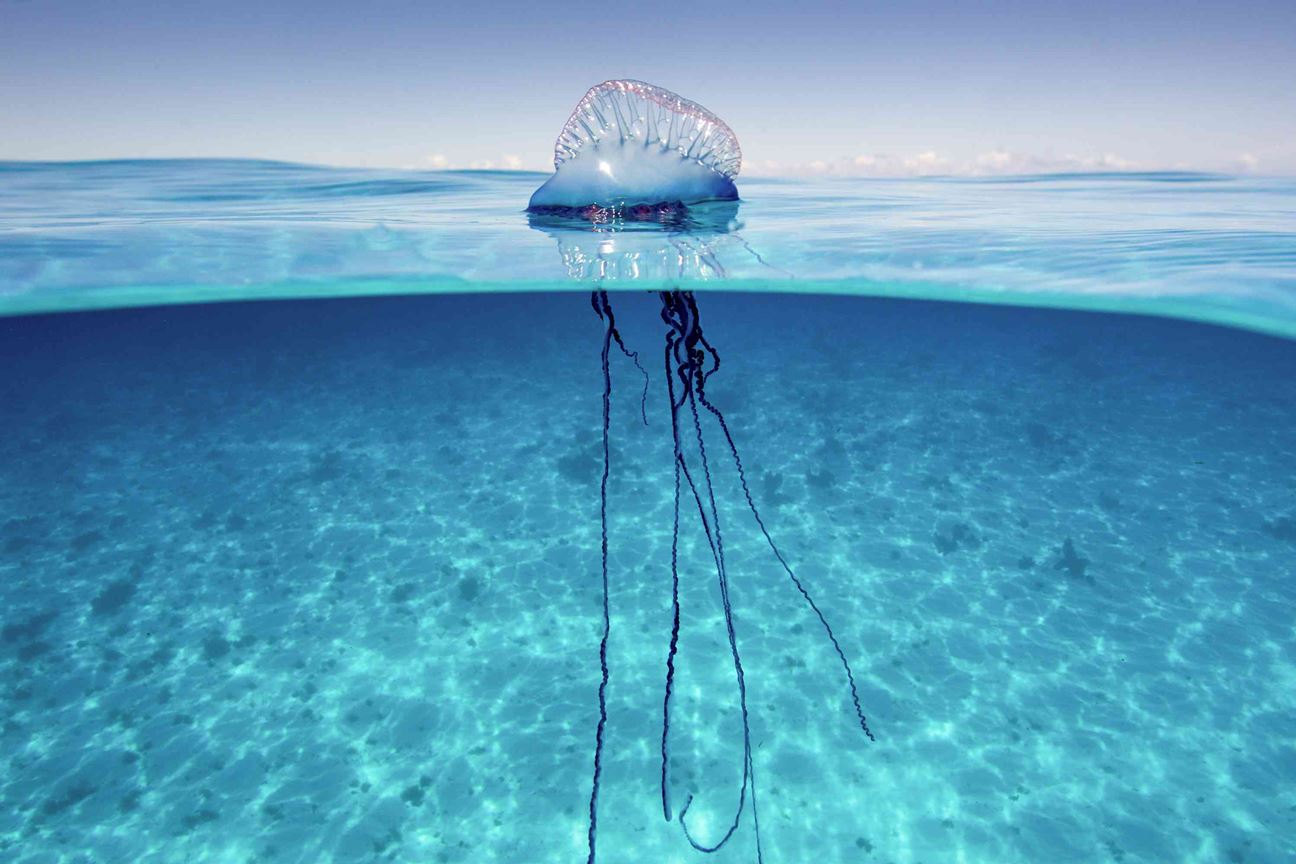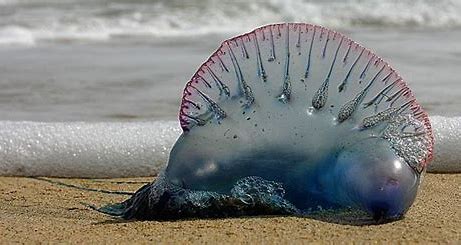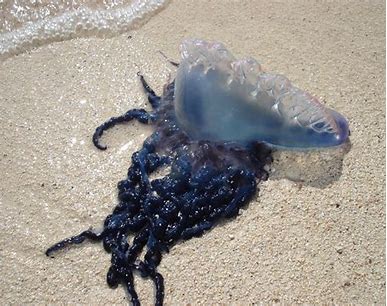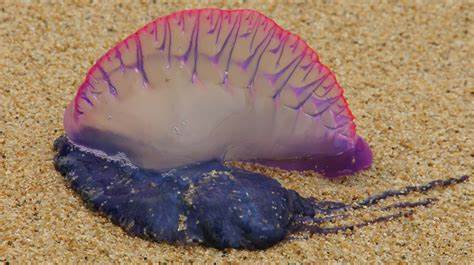Often mistaken for a jellyfish, this organism is not a singular creature but rather a colonial organism comprised of interconnected polyps working in harmony.
The Portuguese Man o' War, with its vibrant hues and delicate tendrils, is a marine marvel that commands both fascination and respect.

The "Floating Terror"
Beneath the sun-kissed waves of the world's oceans, a captivating and perilous creature drifts with an ethereal beauty that belies its true danger. Named after the distinctive 18th-century warships with their billowing sails, the Portuguese Man o' War (Physalia physalis) is not a single organism, but a siphonophore – a colony of specialized polyps working together for survival. Its translucent, balloon-like float (pneumatophore) sits atop the water, enabling it to sail along with ocean currents. These floats can measure up to 30 centimeters and come in shades of blue, pink, and purple, creating a striking contrast against the azure backdrop of the sea. It resembles a jelly fish but is in no way similar to it except for the fact that it is slimy with tentacles, but again not all tentacles are of jellyfish and in many way this siphonophore is much more dangerous than jellyfish - YIKES!!
Tendrils of Doom
Beneath the water's surface, the slimy, the weirdly greasy and the naturally uneasy looking the Portuguese Man o' War boasts long, venomous tentacles that can extend up to 50 meters, armed with specialized stinging cells known as nematocysts. These nematocysts, activated upon contact with prey or threats, deliver a potent venom designed to immobilize and subdue. While its sting is rarely fatal to humans, it can cause excruciating pain, welts, and even allergic reactions in some cases. The stings have earned this creature its ominous reputation as the "floating terror" of the seas.

Ecosystem Role
Despite its fierce reputation, the Portuguese Man o' War plays an essential role in ocean ecosystems. As predators of small fish and plankton, they help control the populations of these organisms, maintaining the delicate balance of the food chain. Additionally, their floats provide shelter to certain species of fish and even small crabs, showcasing the intricate interconnectedness of marine life.
 Human Encounters and Precautions
Human Encounters and Precautions
Encountering a Portuguese Man o' War washed ashore can be a mesmerizing but potentially hazardous experience. The venomous tentacles, even when detached, can retain their potency for days. Therefore, caution is crucial when exploring beaches where these creatures are present. If stung, it's advised to rinse the affected area with vinegar to deactivate the nematocysts and seek medical attention if symptoms persist or worsen. There have been many reposted instances of it even casuing fatal and grievous injuries leading to life long health problems as well as many instances of causing death.
 Conservation and Awareness
Conservation and Awareness
As we strive to protect our oceans and the diverse life they hold, it's important to remember that the Portuguese Man o' War, despite its dangers, is a crucial component of marine ecosystems. By raising awareness about these creatures and promoting responsible practices when encountering them, we can coexist with these oceanic wonders while minimizing risks to ourselves and the environment.
 Conclusion
Conclusion
The Portuguese Man o' War embodies the dichotomy of nature's beauty and danger, captivating observers with its otherworldly appearance while commanding respect for its potentially harmful sting. By understanding its role in ocean ecosystems and adopting precautions, we can continue to appreciate the enchanting mysteries that our planet's oceans hold, all while treading cautiously in the presence of this graceful yet perilous marine marvel.
NOTE - Images taken from the internet and their rightful ownership belongs to their respective copyright holders and this blog was in no way intended to intrude over the righful ownership of their owners.